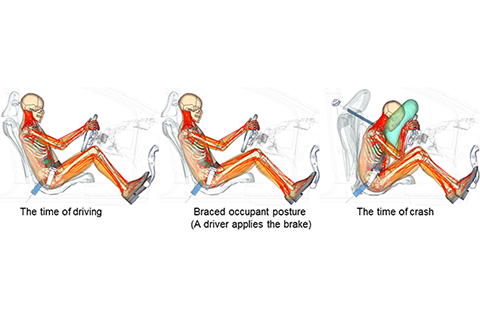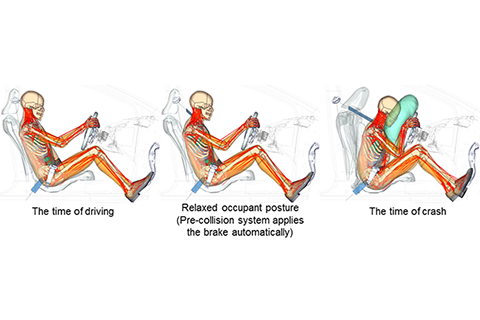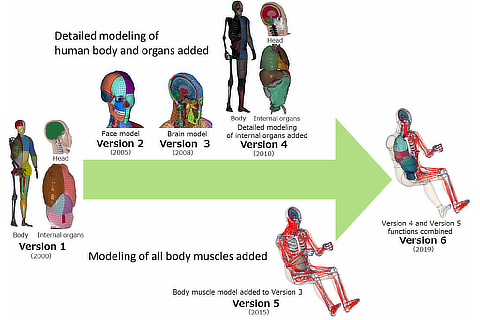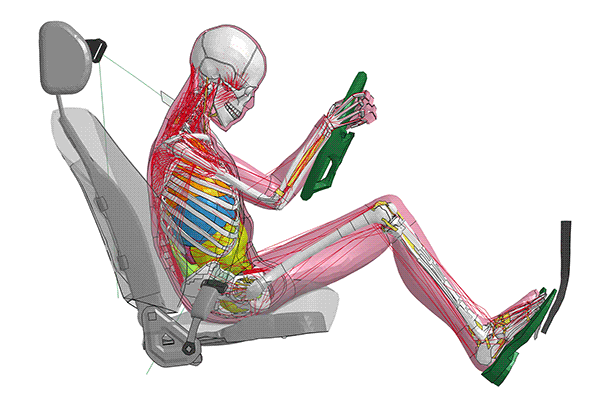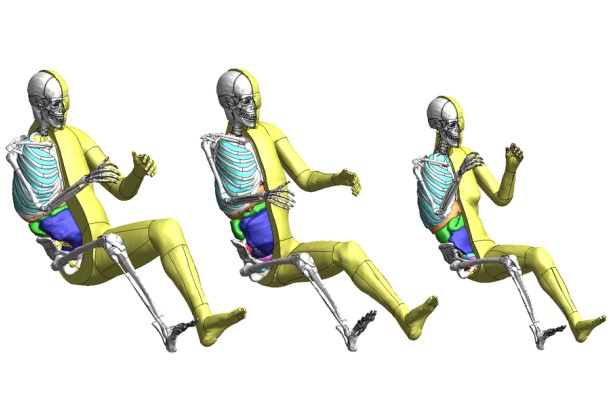Feb. 08, 2019
Toyota Updates its THUMS Virtual Crash Dummy SoftwareVersion 6 will contribute to development of collision safety technologies for future vehicles, including automated
Toyota City, Japan, February 8, 2019―Toyota Motor Corporation (Toyota) and Toyota Central R&D Labs, Inc. today release Version 6 of the Total Human Model for Safety (THUMS*) virtual crash dummy software. Researched and developed for over 20 years by the two companies, THUMS simulates detailed computer analysis of human body injuries caused by vehicle collisions. The new software features internal organ modeling and a new muscle model that simulates a variety of occupant postures, including braced and relaxed, permitting a more detailed analysis by anticipating various occupant postures as the widespread deployment of automated vehicles continues to advance.
THUMS is available for purchase through the JSOL Corporation (Tokyo) and ESI Group (Tokyo). The software has been used in vehicle safety technology research by Toyota as well as automobile manufacturers, parts manufacturers, universities, research institutions, and the like, both in Japan and overseas.
-
-

- Braced occupant posture
(A driver applies the brake)
-
-
-

- Relaxed occupant posture
(Pre-collision system applies the brake automatically)
-
THUMS Version 5 simulates changes in occupant posture by considering occupants' pre-collision muscular states, while THUMS Version 4 accurately analyzes injuries sustained to bones and internal organs at the point of collision. Previously, injury researchers aiming to both simulate pre-collision changes in occupant posture and to analyze occupant injuries sustained at the point of collision were required to combine Versions 4 and 5 of the software. The newly developed THUMS Version 6 allows researchers to analyze both changes in pre-collision occupant posture and injuries sustained at the point of collision with a high degree of accuracy and, since there is no longer any need to switch between different THUMS versions, will also contribute to improved work efficiency. As preventive safety equipment becomes more widespread in tandem with the deployment of automated driving technologies, occupants are anticipated to assume a wider variety of postures at the point of collision than previously; in particular, driving support functions may result in drivers assuming a more relaxed posture. Toyota expects that THUMS Version 6 will be used in the development of safety technologies that help protect occupants in a variety of different conditions.
Moving forward, in addition to developing preventive safety and automated driving technologies, Toyota intends to research and develop technologies that help protect occupants in the event of a collision by utilizing THUMS, and provide safety and security to its customers under a diverse range of conditions.
*Crash dummies are commonly used in vehicle collision tests; however, they do not allow for easy and detailed analysis of how collisions impact the brain, internal organs, and other parts of the body. As a result, Toyota uses THUMS Finite Element (FE) modeling of human bodies, which it researched and developed together with Toyota Central R&D Labs, Inc., and analyzes such collisions on computers.
Evolution of THUMS
History of THUMS
| Year | Progress | Details |
|---|---|---|
| 1997 | Toyota begins developing THUMS together with Toyota Central R&D Labs, Inc. | |
| 2000 | Version 1 released | Detailed modeling of bones added |
| 2005 | Version 2 released | Detailed modeling of faces added |
| 2008 | Version 3 released | Detailed modeling of the brain added |
| 2010 | Version 4 released | Detailed modeling of internal organs added |
| 2011 | A variety of different physiques added to Version 4 | Small female, large male models added |
| 2015 | Version 5 released | Modeling of all body muscles added |
| 2016 | Child models added to Version 4 | Child models aged 3, 6, and 10 years old added |
| 2019 | Version 6 released | Current release |


